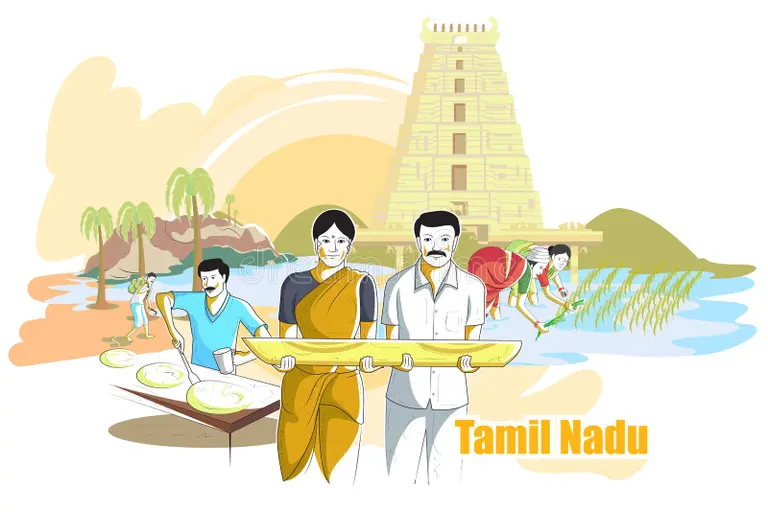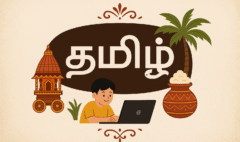How to Negotiate Prices in Tamil at a Local Market
How to Negotiate Prices in Tamil at a Local Market
How to Negotiate Prices in Tamil at a Local Market: A Guide to the Art of Bargaining
One of the most vibrant, colorful, and exciting experiences you can have in Tamil Nadu is a visit to a local market (சந்தை – cantai). From the overflowing baskets of fresh vegetables to the glittering displays of traditional crafts, the market is a feast for the senses. It is also a place where the age-old and good-natured art of bargaining is a part of the daily rhythm of life. For a visitor or a language learner, participating in this process can be an incredibly fun and rewarding cultural experience. The art of bargaining in Tamil is more than just a way to get a better price; it’s a friendly and interactive social dance, a way of connecting with the vendor on a more personal level.
This guide is designed to give you the confidence and the essential Tamil market phrases you need to engage in this process. We will provide you with the core shopping vocabulary and a step-by-step guide to the gentle art of negotiation. Don’t be shy! In a local market in Tamil Nadu, a friendly and respectful attempt to bargain is often expected and is seen as a sign of a savvy shopper. Let’s get ready to shop like a local.
The Mindset: It’s a Friendly Game, Not a Fight
Before we learn the phrases, it’s crucial to understand the mindset. Bargaining in a Tamil market is not an aggressive or confrontational act. It should be a pleasant, smiling, and respectful interaction. It is a game where both the buyer and the seller are trying to arrive at a price that they are both happy with.
- Be Polite and Smile: A warm “வணக்கம்” (vaṇakkam – hello) and a smile are the most important tools you have. Always be friendly and respectful to the vendor.
- Know When to Bargain: Bargaining is generally acceptable and expected in local street markets, with smaller independent vendors, and for items like souvenirs, clothes, and sometimes even fresh produce. It is generally *not* acceptable in larger, fixed-price shops, supermarkets, or restaurants that have a printed menu. Look for price tags. If an item has a clear, printed price tag, the price is usually fixed. If there are no price tags and you have to ask for the price, it is often negotiable.
- Have Realistic Expectations: You are not going to get a 90% discount. A realistic and successful bargain might result in a 10-30% reduction from the initial asking price. The goal is a fair price, not an impossibly cheap one.
Step 1: The Opening – Inquiring About the Price
The first step is to show interest in an item and to ask for its initial price.
Key Phrases:
- “Hello, brother/sister.” – “வணக்கம், அண்ணா/அக்கா.” (Vaṇakkam, aṇṇā/akkā.) – Using “அண்ணா” (aṇṇā – elder brother) for a male vendor or “அக்கா” (akkā – elder sister) for a female vendor is a very common, friendly, and respectful way to address them.
- “What is the price of this?” – “இதன் விலை என்ன?” (Itaṉ vilai eṉṉa?)
- “How much is this?” – “இது எவ்வளவு?” (Itu evvaḷavu?)
- Let’s say the vendor replies, “இது நூறு ரூபாய்.” (Itu nūṟu rūpāy.) – “This is one hundred rupees.”
Step 2: The Counter-Offer – The Heart of the Bargain
Now the dance begins. Your first counter-offer should be lower than what you are actually willing to pay, but it should not be insultingly low. A good rule of thumb is to offer a price that is around 50-60% of the initial asking price.
Key Phrases for Your Counter-Offer:
- “The price is very high.” – “விலை மிகவும் அதிகம்.” (Vilai mikavum atikam.) – This is a very common and almost expected thing to say, always with a smile.
- “Please reduce the price.” – “தயவுசெய்து விலையைக் குறைக்கவும்.” (Tayavuceytu vilaiyaik kuṟaikkavum.) or more simply, “கொஞ்சம் கம்மி பண்ணுங்க.” (Koñcam kam’mi paṇṇuṅka.) – “Please make it a little less.”
- Making your offer: After the vendor has quoted you 100 rupees, a good counter-offer would be, “ஐம்பது ரூபாய்?” (Aimpatu rūpāy?) – “Fifty rupees?” – said as a polite question.
The vendor will now likely act a little surprised, shake their head, and give you a new, slightly lower price. They might say, “இல்லை, அம்மா. தொண்ணூறு ரூபாய்.” (Illai, ammā. Toṇṇūṟu rūpāy.) – “No, ma’am. Ninety rupees.”
Step 3: The Negotiation – Finding the Middle Ground
Now you move up slightly from your initial offer. You could now offer, “சரி, எழுபது ரூபாய்.” (Cari, eḻupatu rūpāy.) – “Okay, seventy rupees.”
The goal is to find a happy medium. The vendor might then come down to “எண்பது ரூபாய்” (eṇpatu rūpāy – eighty rupees). You can then agree on a final price, perhaps by meeting in the middle at seventy-five rupees.
Other Useful Phrases for Negotiation:
- “I am a student.” – “நான் ஒரு மாணவன்/மாணவி.” (Nāṉ oru māṇavaṉ/māṇavi.) – Sometimes used to try and get a better price!
- “I am buying a lot.” – “நான் நிறைய வாங்குகிறேன்.” (Nāṉ niṟaiya vāṅkukiṟēṉ.) – If you are buying multiple items, you can use this to ask for a better overall price.
- “What is your final price?” – “உங்கள் கடைசி விலை என்ன?” (Uṅkaḷ kaṭaici vilai eṉṉa?) – This is a good way to signal that you are ready to close the deal.
- The “Walk Away” (Use with care!): If you are not happy with the price, you can politely say “நன்றி” (nanṟi – thank you) and slowly start to walk away. Very often, the vendor will call you back with a better final offer. This is a classic bargaining technique, but you must be prepared for them to let you walk away!
Step 4: Closing the Deal
Once you have agreed on a price, the final transaction should be a happy one.
- “Okay, I will take it.” – “சரி, நான் இதை எடுத்துக்கொள்கிறேன்.” (Cari, nāṉ itai eṭuttukkoḷkiṟēṉ.)
- And most importantly, always end with a smile and a sincere “நன்றி” (nanṟi – thank you).
Conclusion: A Fun and Rewarding Interaction
The process of bargaining in Tamil is a skill that gets easier with practice. Don’t be afraid to try. Even if your accent is not perfect, your effort to engage with the local culture will be appreciated. By mastering these simple Tamil market phrases and this basic shopping vocabulary, you are doing more than just saving a few rupees. You are participating in a timeless cultural tradition, you are connecting with the local people on their own terms, and you are transforming a simple act of shopping into a truly memorable and authentic travel experience. It is the language of the vibrant, bustling, and beautiful local market in Tamil Nadu.










